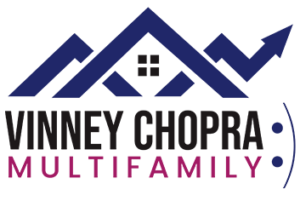Discover the essential rules and standards for investing in senior housing, including compliance, safety measures, and risk management, to ensure profitability. Learn more today. Read more here – Read More
When investing in senior housing, you need to grasp regulatory compliance, like state licensing and federal laws (ADA, Fair Housing Act, HIPAA), which ensure safety and quality care. Licenses and proper staffing with trained professionals are mandatory, and non-compliance can result in severe penalties. Safety and accessibility measures, such as wheelchair-friendly designs and emergency systems, are essential. Investment options include DSTs and REITs, offering diverse portfolios and passive income. Managing risks like lawsuits and staff turnover is critical for profitability. For a successful investment, familiarize yourself with these elements and stay informed about emerging standards and trends.
Key Takeaways
Compliance with state-specific licensing requirements ensures operational legality and quality care standards in senior housing investments.
Adherence to ADA, Fair Housing Act, and HIPAA regulations is mandatory for senior housing facilities.
Regular audits and safety inspections are crucial for maintaining compliance and preventing operational disruptions.
Adequate staffing ratios and certified staff are essential to meet regulatory standards and ensure resident well-being.
Investment options like DSTs and REITs offer accredited investors tax deferral, diversified portfolios, and stable returns in senior housing.
Overview of Senior Housing
Senior housing, a pivotal component of the broader real estate market, encompasses specialized residential facilities designed to meet the unique needs of older adults. These facilities provide varying levels of care and support, tailored to guarantee safety and comfort. As an investor, understanding the nuances of senior housing options is essential. Facilities range from independent living communities and assisted living facilities to memory care and skilled nursing facilities, each offering distinct levels of care.
Investors in senior housing must navigate complex regulatory frameworks to guarantee compliance and quality care. Licensing requirements and operational standards are stringent, reflecting the industry’s commitment to resident safety. The aging population in the United States is driving significant growth in this sector, with demand for senior housing projected to double by 2040. High-growth states like California, Florida, and Texas are seeing concentrated demand due to their aging populations. Experienced operators and tailored facility designs further enhance investment potential by maximizing resident satisfaction.
When evaluating senior housing investments, consider the real needs of the older population and prioritize facilities that offer inclusive care and support. By focusing on high-quality living environments and robust regulatory compliance, you’ll guarantee that your investments not only yield returns but also contribute positively to the well-being of residents.
Types of Senior Housing
Understanding the different types of senior housing is crucial for making well-informed investment decisions in this expanding sector. You need to grasp the diversity within the senior housing market to recognize the opportunities and demands. Projections suggest rental rate growth exceeding 1% in the senior housing sector, making it an attractive investment option.
First, there are independent living communities. These cater to active seniors who need minimal assistance. They focus on social activities and community engagement, making them an appealing real estate asset class.
Next, consider assisted living facilities. These provide personal care services such as bathing and medication management. Given the aging population, the demand for these facilities is on the rise.
Memory care facilities are another vital segment. They specialize in care for seniors with Alzheimer’s or dementia, offering tailored programs and safety measures. This specialized care is increasingly in demand as the prevalence of dementia grows.
Skilled nursing facilities offer 24-hour medical care and rehabilitation services. They cater to seniors with complex healthcare needs, ensuring high standards of safety and medical oversight.
Lastly, continuing care retirement communities (CCRCs) provide a continuum of care from independent living to skilled nursing. Investing in senior housing within CCRCs can be particularly attractive due to their extensive service offerings.
Regulatory Compliance
Exploring the regulatory terrain in senior housing investment is CRUCIAL for ENSURING operational success and legal compliance. You need to navigate through a complex landscape of state-specific licensing requirements, ENSURING your facility meets all necessary criteria for operating legally. Compliance with overarching laws like the Americans with Disabilities Act (ADA) and the Fair Housing Act is VITAL. These laws ENSURE accessibility and non-discrimination, safeguarding residents’ rights and your facility’s reputation. Federal regulations, such as HIPAA, are also VITAL. They mandate stringent standards for resident privacy and data protection. Regular audits and inspections are part and parcel of maintaining these standards. They ENSURE your facility is adhering to safety, care, and service requirements. Skipping these can lead to severe consequences, including fines, legal liabilities, and reputational harm. If you are an accredited investor, understanding these compliance requirements is VITAL for making informed investment decisions.
It’s VITAL to stay vigilant and proactive. Regularly review your compliance status, and keep abreast of any changes in regulations. Non-compliance isn’t just about penalties; it’s about the safety and well-being of your residents. By prioritizing regulatory compliance, you ENSURE your senior housing investment is both legally sound and a safe haven for its occupants.
Licensing Requirements
Understanding the licensing requirements for senior housing facilities is crucial for guaranteeing operational legitimacy and high standards of care. Licensing requirements vary by state and typically encompass several critical areas, including staffing ratios, training programs, and facility amenities. Adhering to state regulations helps ensure that senior housing facilities provide quality care and maintain the health and safety of their residents.
You’ll need to be vigilant about meeting specific state-mandated certifications for staff members. For example, employing Certified Nursing Assistants (CNAs) and Licensed Practical Nurses (LPNs) is often a requirement to confirm that residents receive professional, competent care. Additionally, facilities must offer training programs to keep staff updated on best practices and new health protocols.
Compliance with state regulations is non-negotiable. Your facility will undergo regular inspections and audits to verify adherence to licensing standards. These standards cover cleanliness, security, and overall care services. Falling short can lead to fines, penalties, or even facility closure.
Staffing Standards
Maintaining proper staffing standards in senior housing facilities is essential for guaranteeing residents receive high-quality care and support. Adequate staffing ratios are pivotal as they allow staff to provide proper attention and assistance with daily activities, which directly impacts the well-being of residents. Regulations often dictate minimum staffing levels, which vary based on the type of facility and the acuity of residents. These regulations ensure that there are enough qualified individuals to meet the diverse needs of the senior population.
In addition to meeting minimum staffing levels, facilities must also adhere to stringent requirements for background checks and training. Background checks are essential for guaranteeing that staff members have a clean record and are trustworthy. Training programs, both initial and ongoing, are necessary to equip staff with the skills they need to deliver quality care. Professional development opportunities also play a pivotal role in maintaining high standards, as they enable staff to stay updated on best practices and new care techniques.
Safety and Accessibility
When it comes to guaranteeing the safety and accessibility of senior housing, integrating features like grab bars, non-skid flooring, and emergency call systems is essential to residents’ well-being. These safety standards are not just regulatory; they’re necessary for minimizing risks and enhancing the quality of life for seniors. Accessibility is equally important. Wheelchair-friendly layouts, ramps, and elevators ensure that seniors with mobility challenges can navigate their living spaces with ease. Adhering to ADA guidelines guarantees that the housing facility is accessible to all individuals with disabilities.
Regular safety inspections and strict maintenance protocols are needed to prevent accidents and ensure a secure environment. This involves consistently checking that grab bars are securely installed, non-skid flooring is intact, and emergency call systems are operational. Quick access to medical care and emergency services within or near the senior housing community is another essential aspect. It ensures that in the event of a health emergency, immediate medical attention is available.
Investment Vehicles
Exploring the landscape of senior housing investments, Delaware Statutory Trusts (DSTs) and Real Estate Investment Trusts (REITs) stand out as robust vehicles for potential investors. DSTs are specifically designed for accredited investors, offering a unique opportunity to defer capital gains taxes through 1031 exchanges. By investing in institutional-quality properties, DSTs provide fractional ownership, which can lead to diversified portfolios and potential income streams.
REITs, on the other hand, offer a passive investment avenue by pooling funds managed by professionals. As a REIT investor, you benefit from attractive dividend yields, as REITs are mandated to distribute at least 90% of their taxable income to shareholders annually. This can secure consistent income, a critical factor when considering senior housing investments.
Both DSTs and REITs are highly regarded in the senior housing sector due to their potential for long-term appreciation and stable returns. For accredited investors seeking deferred capital gains taxes and a hands-off investment approach, DSTs provide valuable opportunities. Meanwhile, REITs cater to those looking for a simpler, passive investment with reliable dividend yields, making senior housing an appealing and secure investment choice.
Risk Management
Risk management in senior housing investments is essential for ensuring long-term profitability and stability. As an investor, you must address potential lawsuits, staff turnover, regulatory challenges, and legislative risks. Each of these elements can greatly impact your returns and the operational stability of senior housing properties.
Understanding the unique risks in the senior housing industry is vital. For instance, potential lawsuits often stem from the quality of care provided, making it crucial to invest in high-quality management companies with proven operational expertise. Staff turnover is another important factor; high turnover rates can lead to inconsistencies in care and increased operational costs. As a result, focusing on strategic investments in staff training and retention programs can mitigate this risk.
Regulatory challenges and legislative risks are ever-present in this sector. Staying abreast of changes in healthcare regulations and ensuring compliance through rigorous oversight can protect your investments.
Frequently Asked Questions
Why Is Senior Housing a Good Investment?
Senior housing is a good investment because demographic trends show rising market demand as the aging population grows. You’ll find long-term stability and income potential due to high occupancy rates and recurring revenue. The sector addresses healthcare needs and offers community amenities, enhancing value. Additionally, it provides tax benefits and diversification opportunities, hedging against traditional real estate. Real estate appreciation and social impact further solidify its attractiveness.
Is Real Estate a Good Investment for Seniors?
Imagine your nest egg as a flourishing garden. Real estate, especially in retirement communities, can be a great investment for seniors. Effective property management guarantees rental properties provide steady income, aligning with positive market trends. Tailored investment strategies and meticulous financial planning enhance your asset allocation. Prioritize risk management and understand tax implications for long-term wealth. This approach offers a secure path toward financial stability and peace of mind in retirement.
Conclusion
Coincidentally, as you’ve explored the intricacies of senior housing investment, you’ve likely realized it’s not just about financial returns. Regulatory compliance, licensing requirements, staffing standards, and safety protocols all intertwine to safeguard residents and your investment. By understanding these layers, you’re better equipped to navigate this intricate field. Your diligence in mastering these elements guarantees not only a sound investment but also contributes to enhancing the quality of life for seniors.

